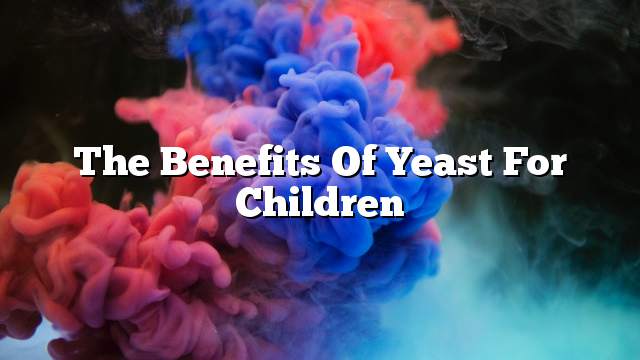Yeast
Yeast is really a type of mono-cell fungus, which is a strain of fungus that has the scientific name “Saccharomyces cerevisiae”, and there are three types of yeast are the most famous and used in cooking and health:
The first type is the yeast of bread or baker: it is a mixture of more than one species of fungus “Saccharomyces cerevisiae”, which has the appropriate taste, and its ability to blow bread dough by producing carbon dioxide, and yeast baker active yeast; .
The second type is beer yeast. In this type, the breeds that have the ability to produce alcohol are characterized. They have the flavor of the time. They are used in brewing wine and beer. They have healthy uses as a source of energy, protein, and to improve immunity. And brewer’s yeast from inert inactive yeast that is killed during the manufacture process. The third type of food yeast: Yeast is obtained from whey, sugar cane, beets and other yeast-fed substances. It is then washed and exposed to heat and becomes inert, inactive, then formed and packaged in the form that reaches the consumer.
Beer yeast has been used throughout history to treat burns, wound healing, diarrhea, eczema, diabetes and neurological disorders. It has also been used to lower cholesterol, as an energy source, improve immune function, relieve stress and reduce wrinkles. There are not enough scientific studies to prove the benefits of yeast in most of these areas, but beer yeast and dietary yeast are used as a dietary supplement containing many important nutrients.
The nutritional value of the yeast
Brewer Yeast contains a group of vitamins B and many important food minerals such as iron, potassium, calcium and selenium. It is one of the most abundant sources of chromium. It contains all the essential amino acids and is about half its weight.
The food yeast contains eighteen amino acids, including the nine essential amino acids. This can be called full protein. It is also rich in iron, selenium and zinc, and one serving of this kind of yeast produces about four grams of fiber. Yeast is also a source of B1, B3, B6, and folic acid (B9). Some commercial yeast foods are also supported by vitamin B12.
The benefits of yeast for children
Some believe that yeast is safe for children, and can be eaten and used in many recipes. Saccharomyces boulardii yeast may also be safe for use by children. While it is advised not to provide beer yeast as a dietary supplement for children; for lack of studies prove its safety for consumption by children., Here are some nutrients, minerals and vitamins supplied by yeast to children:
- Provides the body with proteins: Yeast is a complete protein, which contains all the essential amino acids that the human body can not make and must be obtained through food and is important in the process of muscle building.
- Yeast is a good source of iron: Iron is an important mineral that contributes to the formation of red blood cells, thus preventing anemia and has an important role in many vital processes in the human body.
- Vitamin B1: Yeast is a source of vitamin B 1 (thiamine) that helps burn carbohydrates and turn them into energy, which is important for the health of neurons and the heart.
- Vitamin B7: Yeast is also a source of vitamin B7 (biotin), which enters the metabolism of proteins and carbohydrates, which is important in the process of production of hormones and cholesterol in the body.
- The yeast has proven benefits in the improvement of certain health conditions for children:
- Saccharomyces boulardii yeast has been shown to help reduce and reduce diarrhea associated with the use of antibiotics for children, as well as prevention of rotavirus-related diarrhea in children.
- In the study of a large number of children with gastroenteritis, diarrhea was provided with a dose of 500 mg / day for 5 days of yeast Saccharomyces boulardii, a rapid improvement was observed in the reduction Of the duration of the diarrhea unit in children, and found that the dose was tolerated without any side effects.
Other benefits of yeast
- Yeast treatment may help to strengthen memory because it contains vitamin B1.
- Eating yeast improves the nutritional value of foods by their ability to produce folic acid; important in the process of cellular division and growth, increased intestinal absorption of minerals, eating adequate amounts of folic acid reduces the risk of fetal diseases with congenital diseases such as neural tube defects, and may reduce the chances of Chronic diseases such as cancer, cardiovascular disease, and Alzheimer’s.
- Eating yeast may help lower blood sugar levels in people with diabetes because it contains chromium, which increases the effectiveness of the body in the use of insulin. Recent studies have shown that ingestion of beer yeast for eight consecutive weeks can reduce sugar levels and regulate blood levels. Of the need for diabetics to use some drugs.
- Beer yeast may help lower levels of LDL cholesterol in the blood and raise HDL cholesterol levels, according to some studies. However, how the yeast effect is still unknown, and some other studies have not shown the same positive results.
- Drinking beer yeast may also be helpful in combating upper respiratory infection, such as colds and flu.
Yeast eating precautions
Some side effects may occur when you eat yeast and you should pay attention to it:
- Yeast sensitivity: Yeast sensitivity shows symptoms throughout the body, including skin rash, pain in different areas of the body, mood swings, and in some cases allergic reactions can be serious and can lead to long-term damage.
- Yeast intolerance: In this case, symptoms that appear less severe than those in the case of yeast sensitivity, and include symptoms of mild and limited digestive system, such as gas.
